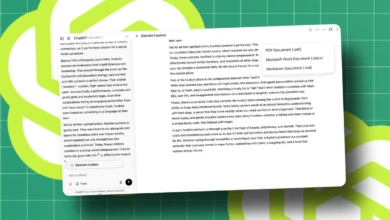10 OpenAI Strategies for Building Powerful AI Agents

▼ Summary
– AI agents are systems that independently accomplish tasks, and OpenAI provides a practical guide with 10 best practices for deploying them effectively.
– Prioritize automating stubborn workflows that resist traditional automation, as AI agents excel where conventional methods fail.
– Agents consist of three key elements: models (AI reasoning), tools (APIs for execution), and instructions (prompts guiding tasks).
– Start with the smartest AI model to establish performance, then optimize costs by testing less capable models once the task works reliably.
– Use prompt templates and guardrails to simplify agent management and ensure safety, while planning for human intervention when agents fail or take high-risk actions.
The rapid evolution of AI agents is transforming how businesses automate complex workflows. These intelligent systems, designed to operate independently, are moving beyond theoretical discussions into practical applications. OpenAI’s recent 34-page guide offers actionable insights for organizations looking to harness their potential effectively.
Stubborn workflows, those resistant to traditional automation, are prime candidates for AI agents. Unlike rigid algorithms, agents excel at handling tasks requiring judgment calls or adaptability. Before deploying them, assess whether simpler solutions exist. AI should complement, not replace, existing tools when they suffice.
Every agent relies on three core components: models, tools, and instructions. The model serves as the brain, tools act as interfaces (like APIs), and instructions define the task parameters. For example, an e-commerce agent filtering shoe images would combine an image recognition API with specific guidelines on acceptable content. This triad ensures precision where human oversight might falter.
Start with the most capable AI model, then optimize for cost. While cheaper models seem appealing, OpenAI advises beginning with high-performance versions to establish benchmarks. Once the workflow functions smoothly, downgrade incrementally to balance efficiency and expense. This mirrors manufacturing’s “build first, refine later” philosophy.
Complexity multiplies with each added agent, so maximize individual capabilities first. Early experiments with multi-agent systems reveal coordination challenges. A single, well-tuned agent handling multiple tasks often outperforms a disjointed team. Prompt templates, predefined, customizable instructions, help streamline operations without agent sprawl.
As tools diversify, so should agents. Assign specialized roles, much like tradespeople on a construction site. Overlapping functionalities confuse models, so clarity is key. If performance suffers, split responsibilities among additional agents or simplify the workflow.
Guardrails are non-negotiable. OpenAI outlines seven layers, from relevance classifiers to output validation, to mitigate risks like harmful content or data leaks. Implement these incrementally, addressing known vulnerabilities first, then expanding as new threats emerge.
Human oversight remains critical. Systems should flag anomalies, repeated failures or high-risk actions, for review. Whether it’s unauthorized refunds or sensitive operations, human judgment provides a necessary safety net.
The path to effective AI integration mirrors traditional IT best practices: start small, validate, and scale deliberately. Flexibility and clear prompts underpin success. While agents promise efficiency, their true value emerges through iterative refinement and measured deployment.
Have you tested AI agents in your workflows? Which challenges persist, and how might these strategies address them? Share your experiences below.
For ongoing insights, connect with me across platforms, including Twitter/X, Facebook, and YouTube. Stay ahead with the latest tech developments by subscribing to our daily newsletter.
(Source: ZDNET)






